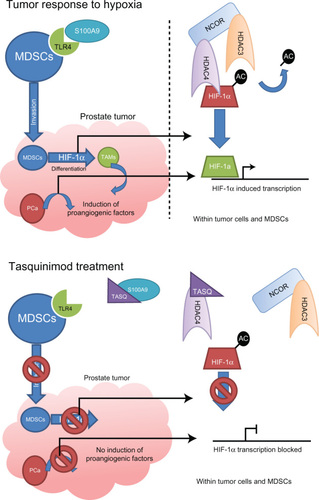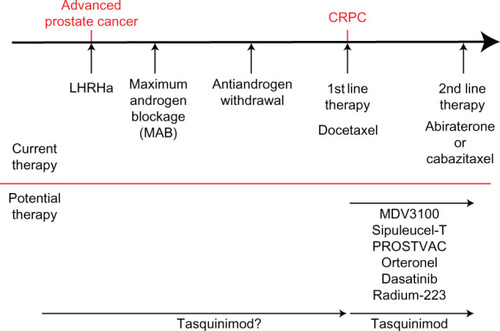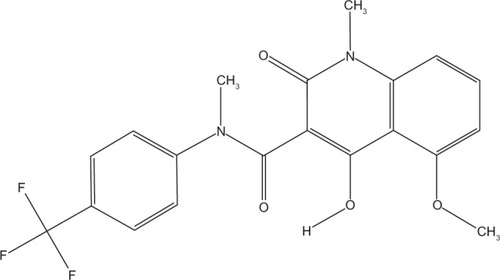Figures & data
Figure 2 Mechanisms of action of tasquinimod.
Notes: Upper panel shows the normal response to hypoxia in a tumor, with invasion of MDSCs and differentiation to TAMs through HIF-1α along with tumor cell hypoxic response, with the underlying molecular mechanism depicted on the right hand side. The lower panel shows how tasquinimod (TASQ) can efficiently disrupt both MDSCs invasion and hypoxic response in cells within the tumor through disruption of TLR4/S100A9 and HDAC4/N-CoR/HDAC3 interactions.
Abbreviations: HDAC, histone deacetylase; HIF-1α, hypoxia-induced factor-1 alpha; MDSCs, myeloid-derived suppressor cells; TAMs, tumor associated macrophages; TLR4, Toll-like receptor 4.
Abbreviations: HDAC, histone deacetylase; HIF-1α, hypoxia-induced factor-1 alpha; MDSCs, myeloid-derived suppressor cells; TAMs, tumor associated macrophages; TLR4, Toll-like receptor 4.

Table 1 Frequency of adverse events in tasquinimod versus placebo treated patients
Figure 3 Prostate cancer therapeutic options.
Notes: Upper panel shows the progression of advanced prostate cancer, with the current mainstream treatment options used at each stage. Lower section shows some of the promising therapies coming through and how they could fit into this treatment regime.
Abbreviations: CRPC, castration resistant prostate cancer; LHRHa, luteinizing hormone-releasing hormone analog/antagonist.
Abbreviations: CRPC, castration resistant prostate cancer; LHRHa, luteinizing hormone-releasing hormone analog/antagonist.

